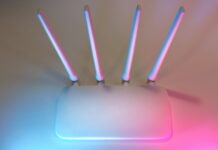
by Michael Holmes,
A tax on house purchase is a tax on house building too and could perversely worsen the housing crisis in the long term,
Raising taxes is a tried and tested way to discourage activity that the Government thinks is bad for us and right now it seems the target is buy-to-let. Unfortunately the unintended consequence of increasing taxation and regulation on this sector could perversely be to further suppress the only activity that offers anything like a long term solution to the housing crisis – building more homes.
A simple way to prevent this would be to exclude new dwellings from the 3% SDLT (stamp duty land tax) surcharge on second residential properties. This would have the desired effect of discouraging investors from pricing out first time buyers bidding for the same existing housing stock, without creating a drag on the house building sector.
Excluding new dwellings would also overcome a problem the levy places on the growing custom and self build sector – anyone buying a plot that is on residential land (garden plots and serviced custom build plots) will have to pay the flat rate surcharge of 3% on the purchase price unless they have sold their existing property first. They can reclaim the tax later providing they sell their current home within 36 months, but it is yet another significant financial burden on cashflow for those who want to build their own home – a sector the Government has pledged to double by 2020.
This calls into question the wider issue of taxation on homebuilding which is growing apace at Town Hall level too, with the adoption of ever greater planning obligations, including the community infrastructure levy (CIL) and s106 agreements requiring the delivery of affordable housing, all of which can weigh down development sites to the point where they are simply unviable. Instead of creating more affordable homes, taxation can perversely result in net fewer homes being built.
In a perfectly transparent and elastic market, planning obligations and other tax hikes on property transactions such as SDLT would fall on the landowner and be paid from the planning gain – and few would argue that the massive windfalls created and delivered by the stroke of a bureaucrats pen should not at least in part be directed to some public good such as social housing. Unfortunately, a tax environment that is transient and lacking in predictability creates uncertainty for landowners, developers and financiers alike and the result is reduced investment and ultimately fewer new homes.
The forthcoming reduction in tax relief on interest on buy-to-let mortgages, the increase in the higher bands of SDLT, the new 3% surcharge on second homes and ever tighter restrictions on mortgage lending must, when taken together, have significantly destabilised the outlook for the property market, making it more vulnerable to a correction starting with the massively overvalued London market.
Risk factors include a significant strengthening of Sterling following a vote to stay in Europe in June, a slowdown in the world economy, or simply marginal interest rate rises that will eventually come at some stage. This could result in a flight from buy-to-let, as landlords decide it’s no longer worth subsidising their investment in the hope of capital gains that are flat or dwindling.
Meanwhile, the reported rush to complete transactions on second residential property purchases ahead of the April 1st deadline for the new 3% surcharge has faint echoes of the last heady days of the late 80s property boom when the then Chancellor Nigel Lawson unexpectedly withdrew double tax relief on mortgage interest payments (MIRAS).
The subsequent crash left thousands of home owners with negative equity and presaged a recession which saw housebuilding decline by 30% within five years. Hopefully the outcome will be nothing like this, but any boom and bust cycle in the housing market has long term corrosive effects on the country’s ability to build enough homes, resulting in the skills deficit, inadequate supply chain and lack of innovation currently experienced in the construction sector.
What we all need is a stable housing market, and this might just be what the Chancellor manages to pull off – even then it would take a decade or more to reach the levels of output required to put a decent roof over everyone’s head at an affordable price.
Michael Holmes is the spokesperson for The National Homebuilding & Renovating Show (14-17 April 2016, NEC, Birmingham).
Help keep news FREE for our readers
Supporting your local community newspaper/online news outlet is crucial now more than ever. If you believe in independent journalism, then consider making a valuable contribution by making a one-time or monthly donation. We operate in rural areas where providing unbiased news can be challenging. Read More About Supporting The West Wales Chronicle
















